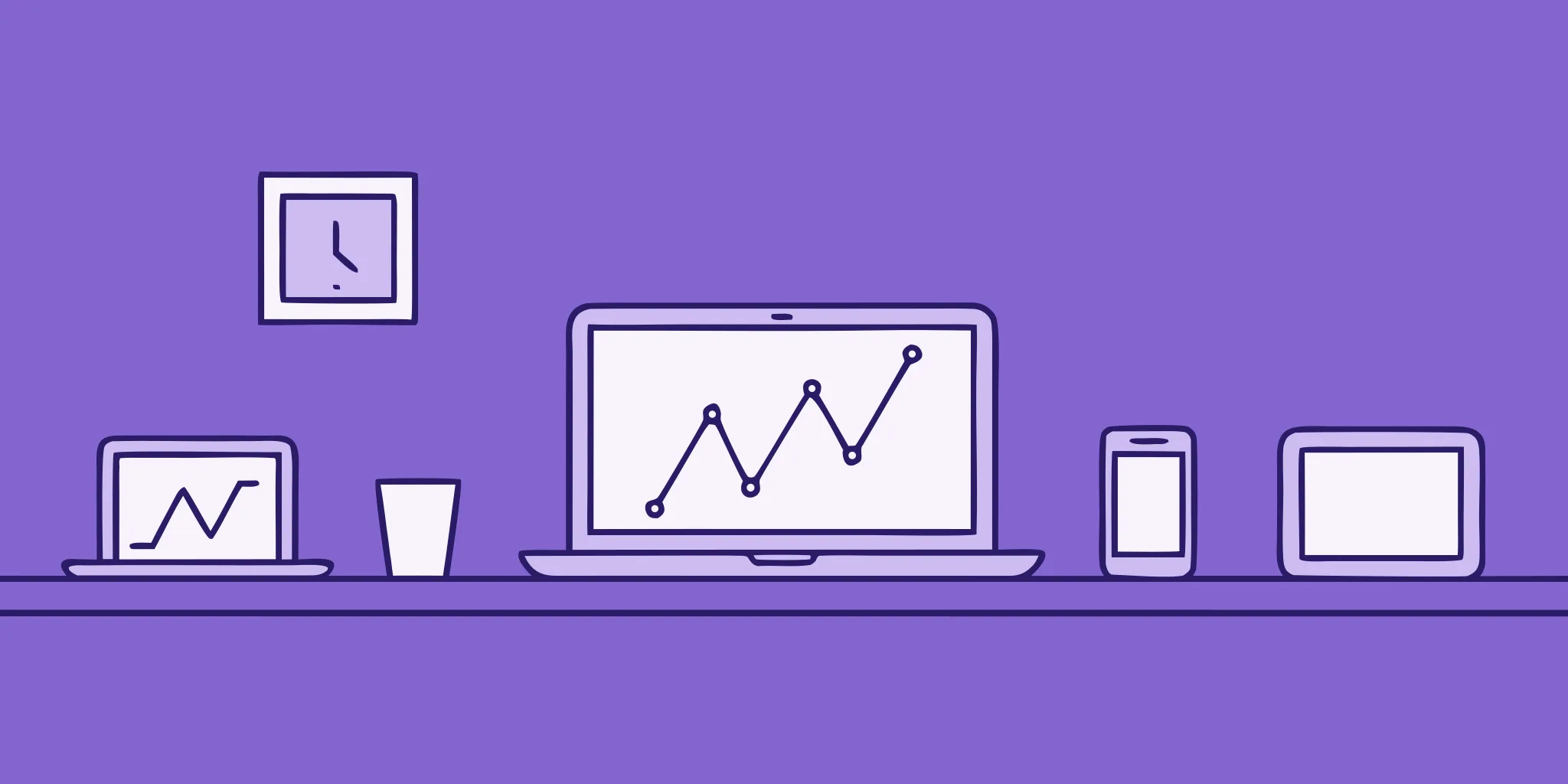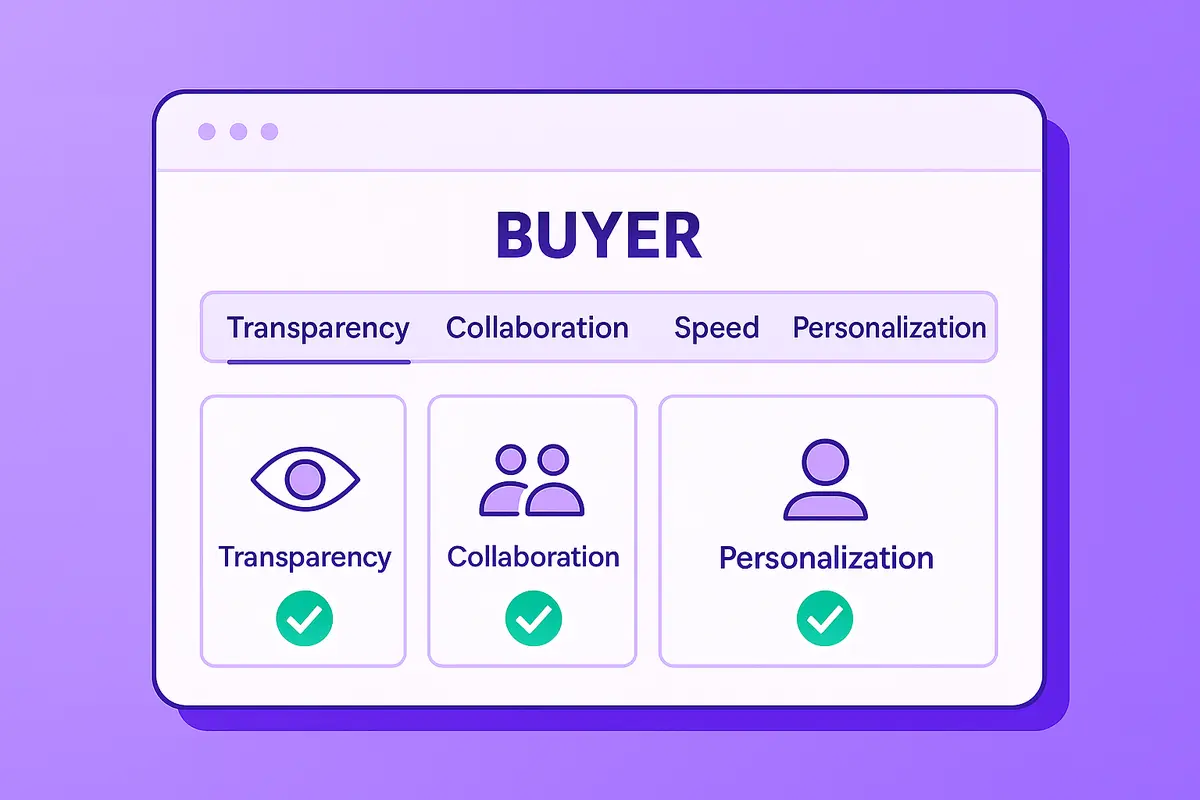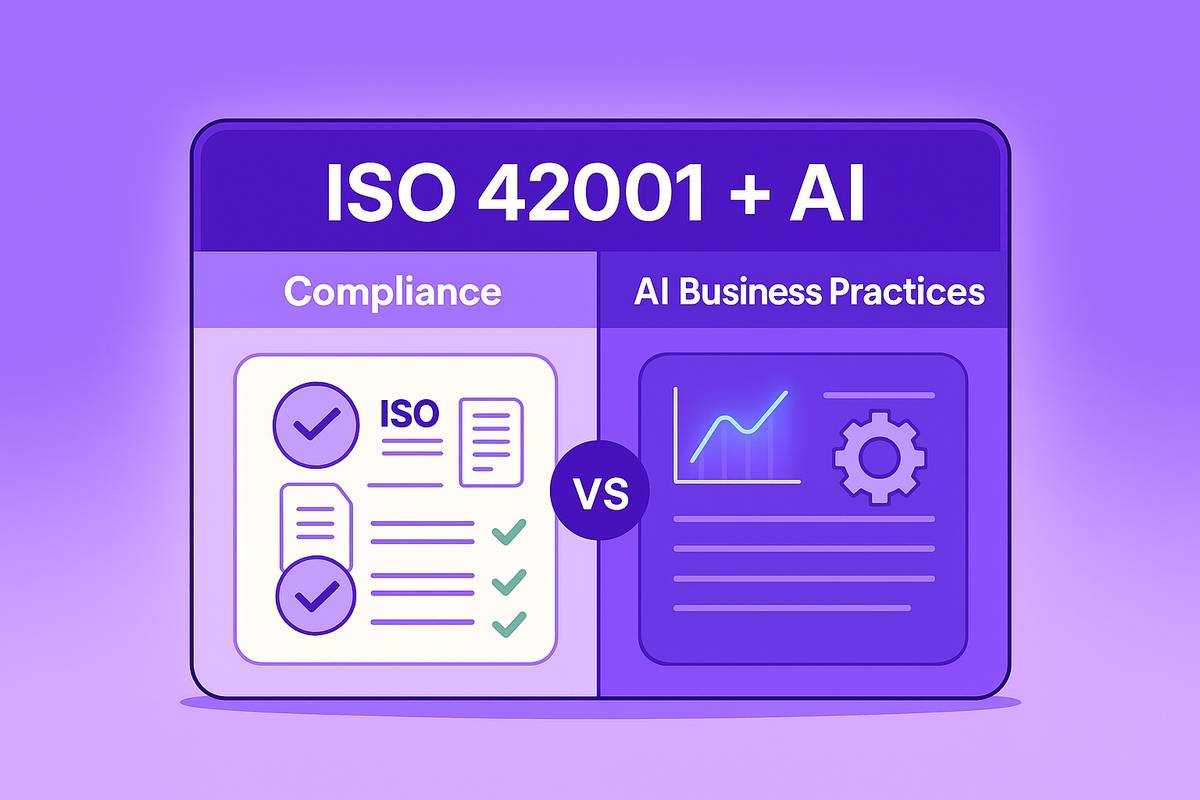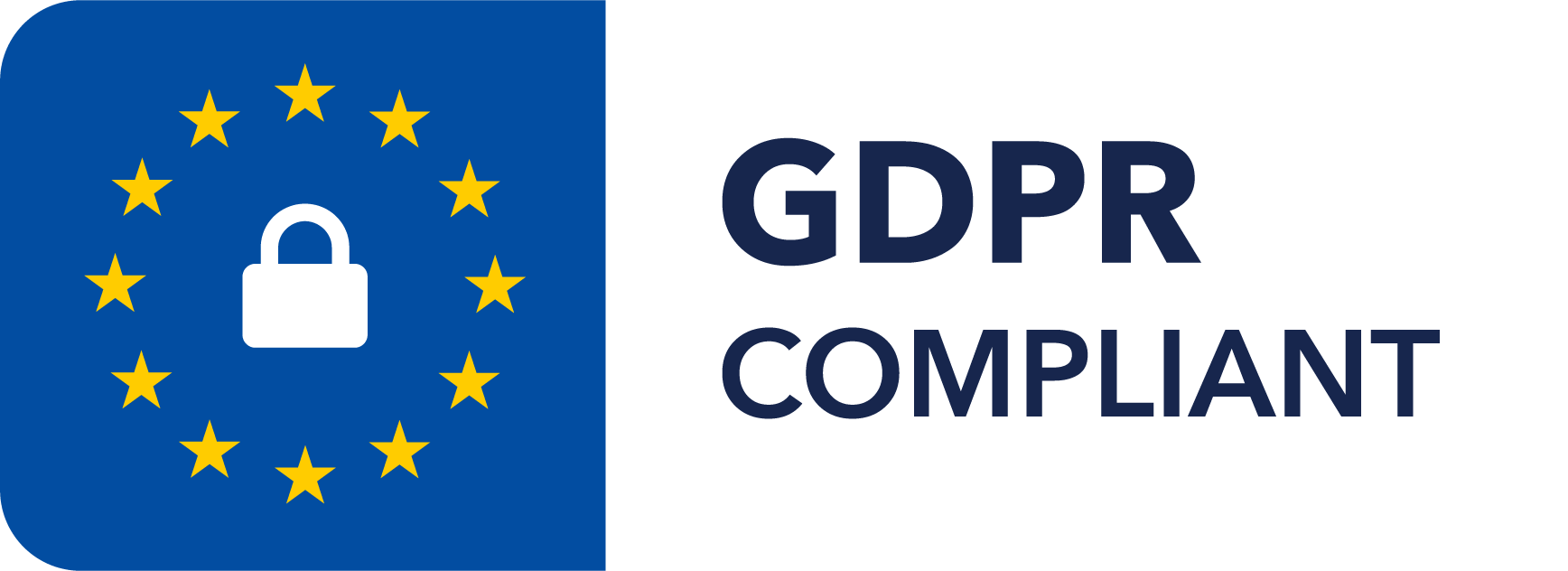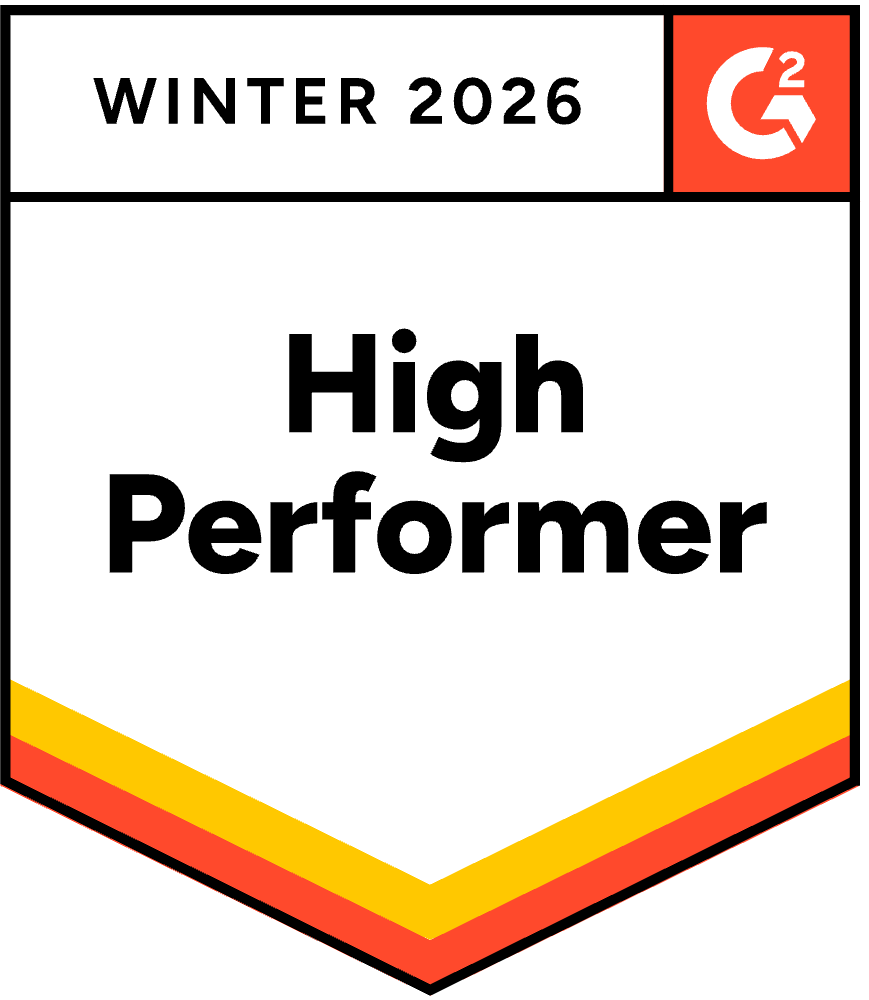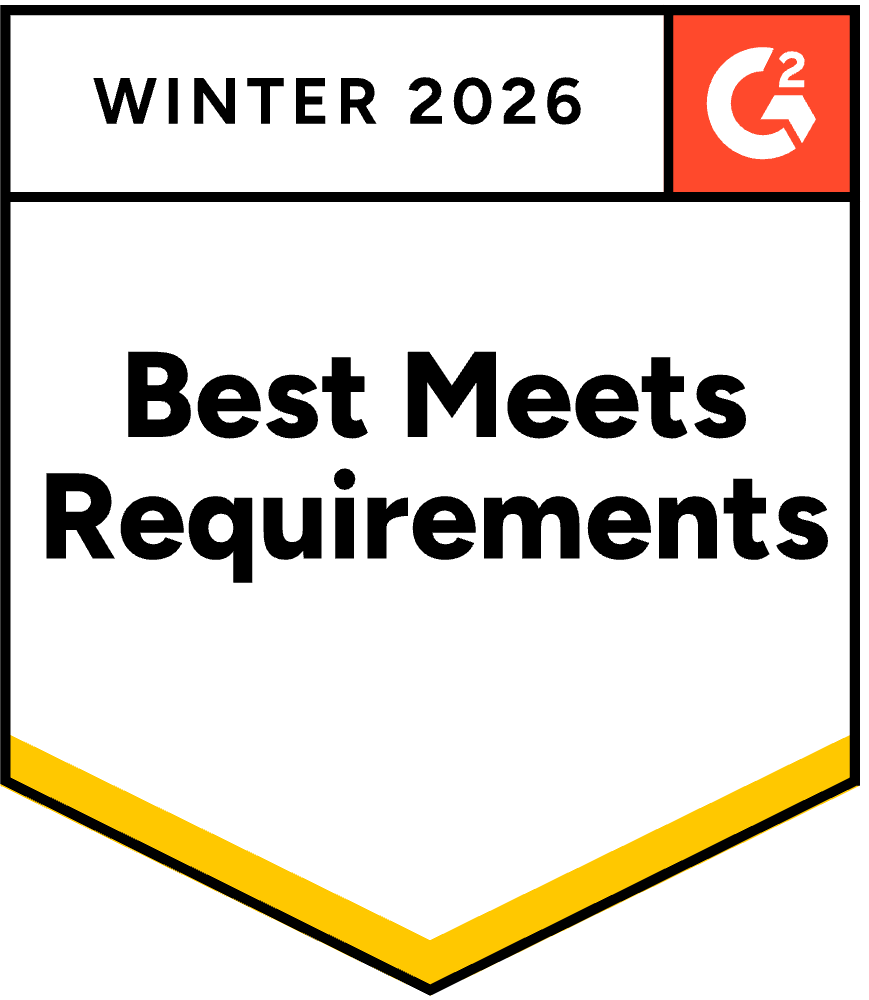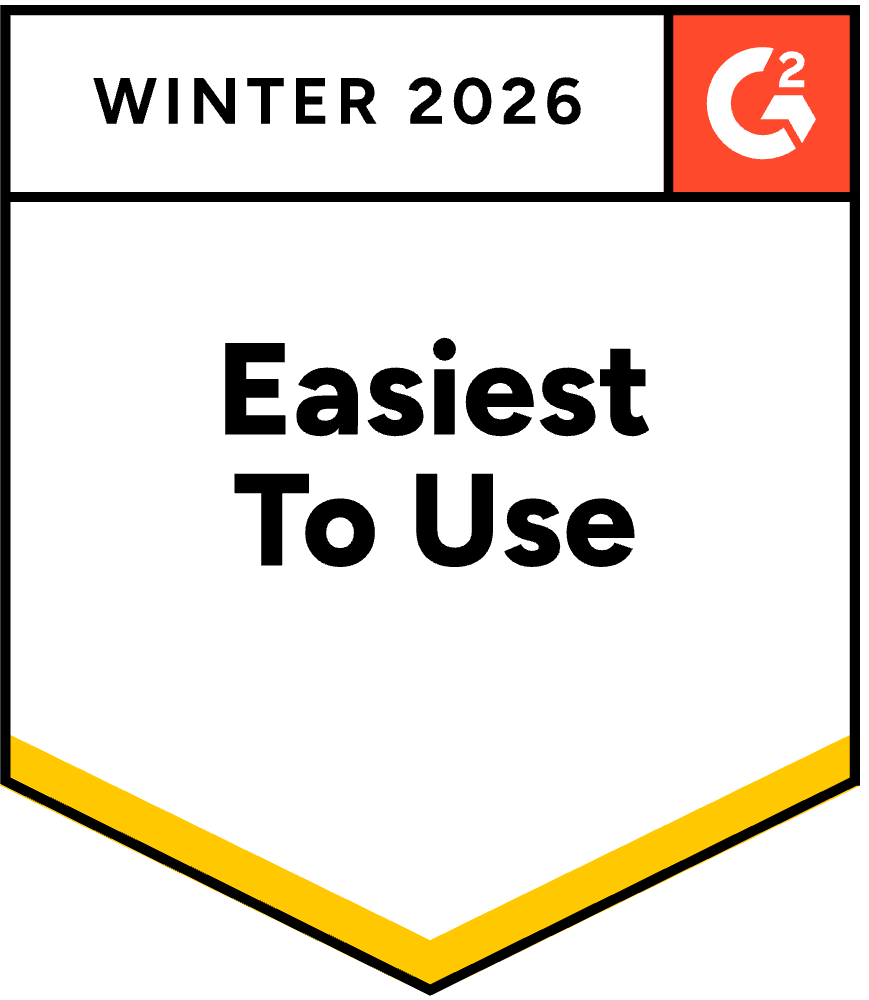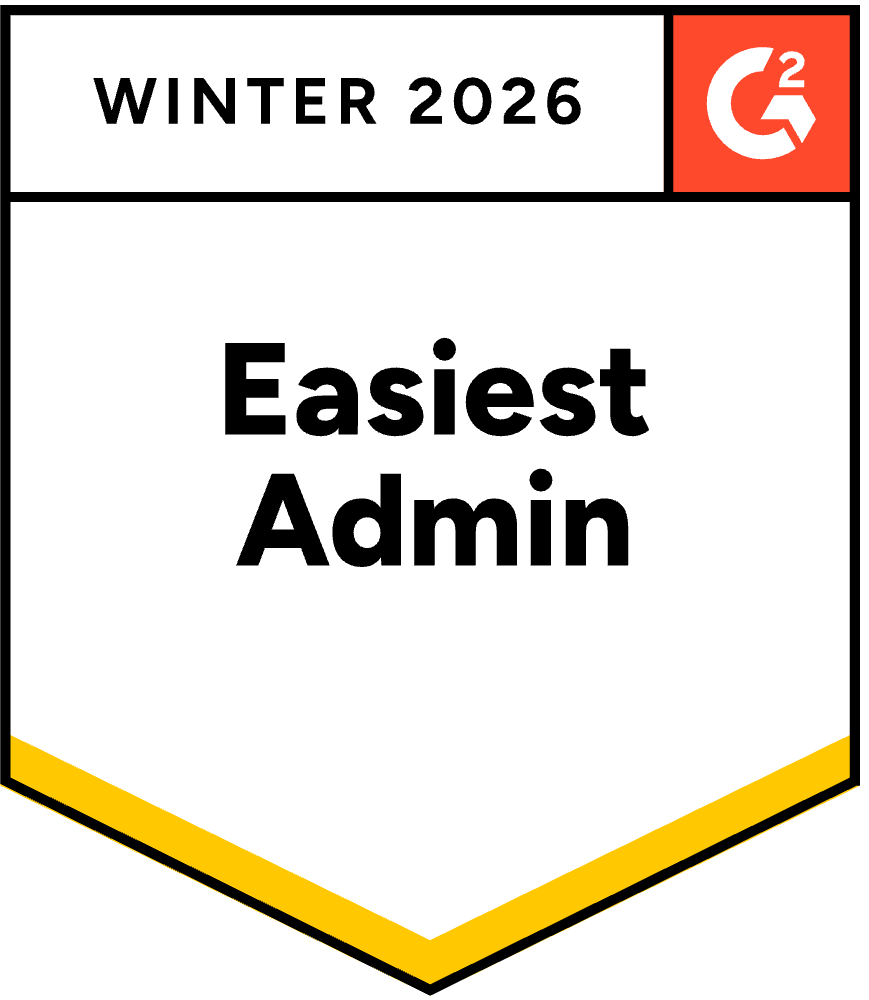RFP Response Software: The Ultimate Guide
July 8, 2025
By
Evie Secilmis
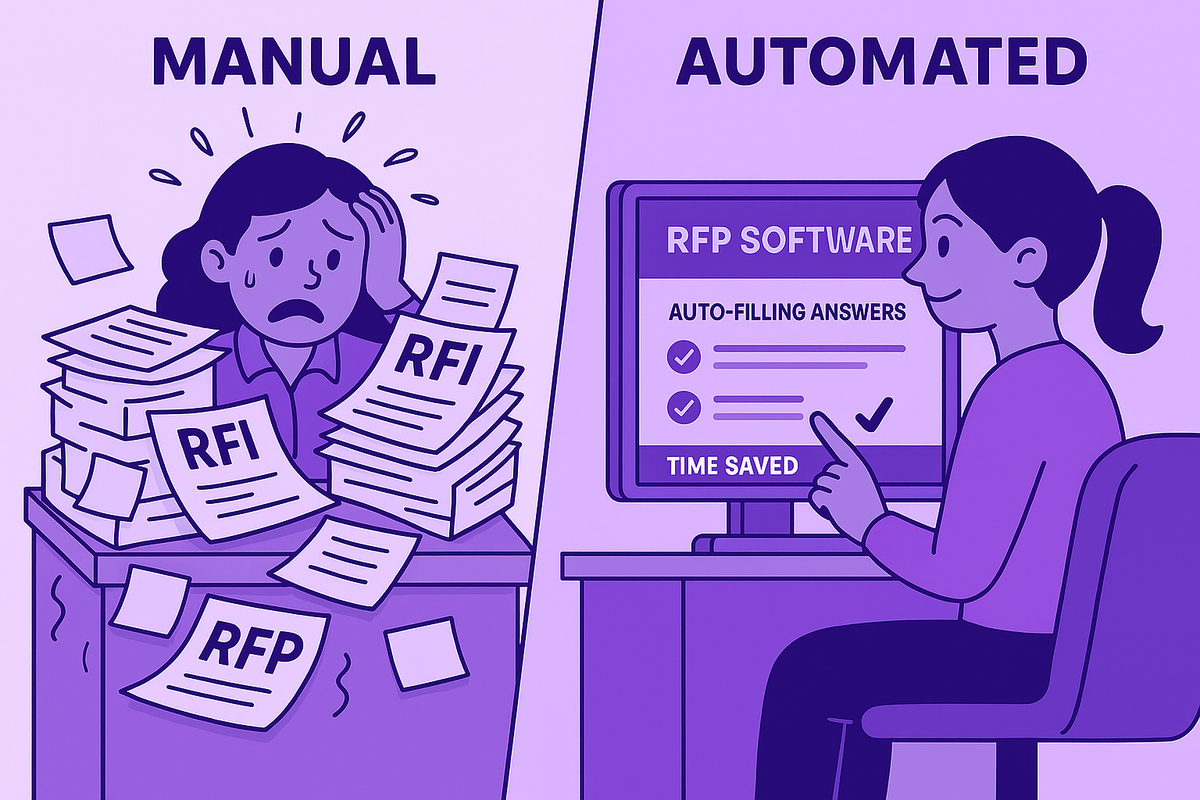
Winning a contract often comes down to how quickly and accurately you respond to an RFP. Manually searching through old documents and piecing together answers is slow and prone to error. This is where modern RFP response software completely changes the game. It's more than just a content library; it's an intelligent partner that helps your team work faster and smarter. This powerful response management software can even use AI to ensure every proposal is built on your best, most current knowledge. We’ll cover how this technology works and what it means for your team’s efficiency.
Before diving into the software, it's important to understand what an RFP is. An RFP, or Request for Proposal, is a document that organizations use to solicit bids from potential vendors for a particular project or service. The RFP outlines the project requirements, goals, and criteria for evaluation, allowing vendors to submit their proposals in a standardized format.
Responding to RFPs can be a complex process, often involving multiple departments and requiring significant time and resources. The goal is to present a compelling proposal that meets the client's needs and stands out from the competition.
What Makes Responding to RFPs So Challenging?
Responding to RFPs is no small feat. Companies often face several challenges, including:
- Time-Consuming Process: Crafting a comprehensive and competitive proposal takes time. Coordinating input from different departments, gathering necessary documents, and ensuring consistency can be overwhelming.
- Resource Allocation: Multiple team members are often involved in the RFP response process, pulling them away from other critical tasks. This can lead to inefficiencies and delays.
- Maintaining Consistency: Ensuring that all proposals maintain a consistent tone and branding while tailoring each response to specific RFP requirements can be challenging.
- Compliance and Accuracy: Meeting the requirements and criteria specified in the RFP is crucial. Any errors or omissions can result in disqualification.
How RFP Response Software Can Help
RFP response software is designed to address these challenges by automating and streamlining the proposal process.Leading solutions like AI RFP software go even further—leveraging natural language processing and intelligent content libraries to help teams answer complex proposals faster and with greater accuracy. Here's how it can help:
Work Faster and Smarter as a Team
RFP response software allows multiple team members to collaborate seamlessly on a single platform. This means that marketing, finance, legal, and other departments can work together in real time, reducing the time it takes to compile a response. The software often includes features like templates, content libraries, and automated workflows, which further expedite the process.
Keep All Your Best Answers in One Place
One of the biggest advantages of RFP response software is centralized content management. Companies can store and organize their proposal content, including templates, boilerplate language, and past responses, in one place. This makes it easy to access and reuse content, ensuring consistency across proposals and reducing the time spent on repetitive tasks.
Tailor Every Proposal with Ease
While consistency is important, RFP response software also allows for customization and personalization. The software enables users to tailor each proposal to the specific requirements of the RFP while maintaining a consistent brand voice. This ensures that proposals are not only compliant but also compelling and relevant to the client's needs.
Ensure Every Response is Accurate and Compliant
RFP response software includes features like compliance checklists and automated reminders to ensure that all necessary information is included and that the proposal meets the RFP's requirements. This reduces the risk of errors and omissions, increasing the chances of success.
How Does RFP Response Software Work?
It’s one thing to talk about the benefits, but it’s another to see how the software actually works. While every platform is a little different, most follow a similar, logical workflow designed to take you from receiving an RFP to submitting a polished proposal. The process breaks down a massive project into a series of manageable steps, turning chaos into a clear, repeatable system. It’s all about creating a foundation of knowledge, letting automation handle the heavy lifting, and giving your team the tools to collaborate effectively and finalize a winning bid.
The Step-by-Step Process
Think of RFP software as your project manager, content librarian, and first-draft writer all rolled into one. It guides your team through a structured process that ensures nothing falls through the cracks. From the moment a new RFP lands in your inbox, the software provides a clear path forward. This system not only saves an incredible amount of time but also introduces a level of consistency and quality control that’s difficult to achieve with manual methods alone. Let's walk through the typical five-step journey.
1. Build Your Knowledge Library
The first and most crucial step is creating a centralized knowledge library. This becomes your single source of truth for every piece of content your company uses in proposals. You can store and organize everything from company history and security protocols to product descriptions, case studies, and answers to frequently asked questions. Instead of hunting through old documents and shared drives, your best, most up-to-date content is in one accessible place. This living library is the foundation for everything that follows, ensuring every proposal starts with approved, accurate information.
2. Ingest and Analyze New RFPs
Once your library is set up, you can feed a new RFP directly into the software. The platform gets to work immediately, breaking down the document and analyzing the questions and requirements. It parses through hundreds of pages in moments, identifying each question that needs an answer and flagging specific compliance requirements. This automated analysis saves your team hours of manual reading and spreadsheet creation, allowing them to focus on strategy rather than administrative setup. It’s like having an assistant who pre-reads and organizes every new opportunity for you.
3. Generate the First Draft
This is where the power of AI comes into play. The software reads the questions from the new RFP and intelligently searches your knowledge library for the most relevant answers. Using this information, it generates a complete first draft of the proposal in minutes. Advanced platforms like Iris use AI to not only find the best answers but also to ensure they match the context and language of the customer's request. This transforms the process from staring at a blank page to refining a nearly finished document, drastically reducing response time.
4. Collaborate with Your Team
RFPs are a team sport, and the software acts as your central playing field. It allows multiple team members—from sales and legal to finance and marketing—to work on the same document in real time. You can assign specific questions to subject matter experts, track progress, and leave comments, all within the platform. This seamless collaboration eliminates the version control nightmares of emailing documents back and forth. Everyone knows what they need to do and by when, making the entire review and approval cycle smoother and more efficient.
5. Finalize and Submit
Before you submit, the software helps with the final quality check. Many platforms include compliance checklists and automated reminders to ensure you’ve answered every question and included all required documentation. This final review step helps you catch potential errors or omissions that could lead to disqualification. Once your team gives the final approval, you can export a professionally formatted, client-ready document that is ready for submission, confident that it meets all the RFP's requirements and represents your company well.
Who Uses RFP Software?
The need to respond to detailed proposals isn't limited to one type of company. Any organization that competes for contracts through a formal bidding process can find immense value in this technology. It’s a tool built for teams that need to produce high-quality, accurate, and persuasive documents under tight deadlines. From small businesses trying to compete with larger incumbents to global enterprises managing dozens of bids at once, RFP software provides the structure and efficiency needed to win more deals.
Key Roles and Industries
Proposal managers, sales teams, and bid managers are the primary users of RFP software, but its impact is felt across the organization. Many different industries rely on these tools, including technology, healthcare, marketing, finance, and professional services. Government contractors, who often face some of the most complex and lengthy RFPs, also see significant benefits. Essentially, if your business growth depends on responding to RFPs, RFIs (Requests for Information), or security questionnaires, this software is designed for you.
Issuing RFPs vs. Responding to Them
It's important to distinguish between the two sides of the RFP coin. Some software is designed for procurement teams to *create and issue* RFPs to vendors. However, the tools we're discussing are built for the other side of the table: the sales and proposal teams who are *responding* to those requests. Platforms like HeyIris are specialized response management solutions. They are engineered to help you manage your content, automate your drafts, and collaborate effectively to submit winning proposals that drive revenue for your business.
What to Look For in the Best RFP Response Software
Not all RFP response software is created equal—and investing in AI RFP tools can dramatically improve speed, compliance, and win rates if you choose the right platform. When selecting the best software for your company, consider the following factors:
- Ease of Use: The software should be user-friendly and intuitive, allowing team members to quickly adapt and start using it effectively.
- Integration Capabilities: Ensure that the software integrates with your existing tools and systems, such as CRM and project management software, for seamless workflow integration.
- Customization Options: Look for software that offers robust customization options, allowing you to tailor proposals to specific RFP requirements.
- Support and Training: Choose a provider that offers excellent customer support and training resources to help your team get up to speed quickly.
- Scalability: As your business grows, your RFP response needs will evolve. Select software that can scale with your company and accommodate future needs.
Purpose-Built AI Assistance
The most impactful RFP software today goes beyond simple content storage, offering AI-powered assistance to do the heavy lifting. Instead of manually sifting through old proposals for the right answer, these platforms use artificial intelligence to analyze incoming questions and instantly suggest the most relevant and accurate responses from your knowledge library. This technology helps you generate a complete first draft in minutes, not days, freeing up your team to focus on strategy and customization rather than tedious searching. It’s a smarter way to work, ensuring that every proposal is built on a foundation of your best, most up-to-date information without the manual effort.
Advanced and Automated Workflows
Winning proposals are a team sport, but coordinating input from sales, legal, and technical experts can quickly become a project management nightmare. The best RFP software simplifies this with advanced and automated workflows. You can assign specific questions to subject matter experts, set deadlines, and track progress all within a single platform. This eliminates endless email chains and version control issues, creating a clear path for collaboration. By automating reminders and approvals, these systems ensure that nothing falls through the cracks, keeping your response on schedule and allowing your team to work together efficiently to meet every deadline.
Support for Multiple Document Types
Your sales team deals with more than just RFPs. The entire sales cycle is filled with requests for information, security questionnaires, and due diligence documents that all require timely and accurate answers. A truly valuable response platform is built to handle this variety. Look for software that can ingest and manage multiple document types, from RFIs to Vendor Security Questionnaires (VSQs). This creates a single source of truth for all your company’s critical information, ensuring consistency whether you’re answering a simple security question or compiling a complex, multi-part proposal. This versatility makes the tool an indispensable asset for the entire revenue team.
Beyond RFPs: Handling RFIs, DDQs, and VSQs
A comprehensive solution recognizes that every questionnaire is an opportunity to build trust with a potential client. That’s why top-tier platforms are designed to manage the full spectrum of business documents, including Requests for Information (RFIs), Due Diligence Questionnaires (DDQs), and Vendor Security Questionnaires (VSQs). By centralizing your responses for all these formats, you ensure your messaging, data, and branding remain consistent across every interaction. This unified approach not only saves time but also strengthens your company’s professional image by providing polished, accurate, and compliant answers no matter what document you’re working on.
Performance Analytics and Reporting
How do you know if your proposal process is actually improving? The best RFP response software provides clear performance analytics and reporting to help you measure what matters. These tools track key metrics like your win/loss rates, response times, and which content is used most often in winning proposals. With this data, you can identify bottlenecks in your workflow, understand which answers resonate most with clients, and see the direct impact of your efforts on the bottom line. Reviewing these insights helps you continuously refine your strategy, making each proposal stronger than the last and proving the ROI of your work. You can see how other teams have improved their win rates by looking at different case studies.
What Results Can You Actually Expect?
Implementing RFP response software can lead to tangible benefits for your company, including:
Win More Bids, More Often
By streamlining the proposal process and ensuring accuracy and compliance, RFP response software increases your chances of winning contracts. With less time spent on administrative tasks, your team can focus on crafting compelling proposals that stand out.
Get Back Your Time (and Budget)
Automation and centralized content management reduce the time and resources required to respond to RFPs. This not only saves money but also allows your team to focus on other important projects.
The Data Behind the Impact
It's one thing to talk about saving time and winning more deals, but the numbers really drive the point home. The impact of dedicated RFP software is significant. For instance, some teams report finishing proposals in a matter of days instead of weeks, a massive acceleration of the sales cycle. This newfound efficiency doesn't just mean faster submissions; it means more of them. One study found that teams using RFP software were able to send 53% more responses. This increase in volume is possible because a centralized platform organizes content and automates repetitive tasks, freeing up your experts to focus on strategy. These aren't just industry averages; they're proven results that teams achieve when they adopt smarter response processes.
Build a More Aligned and Effective Team
With everyone working on the same platform, communication and collaboration are enhanced. Team members can share insights, feedback, and updates in real time, leading to more cohesive and effective proposals.
Examples of RFP Software in the Market
The RFP software market is diverse, with different platforms designed to meet specific business needs. Some tools are built for massive enterprise teams managing hundreds of responses a year, while others focus on creating visually stunning proposals for creative agencies. Understanding the landscape can help you narrow down what’s right for your team. The key is to find a solution that aligns with your primary goals, whether that’s raw speed, design flexibility, or seamless integration with the tools you already use every day. Let's look at a few common categories and the types of software you'll find in each.
For Large Enterprises
Large organizations often deal with a high volume of complex RFPs, RFIs, and security questionnaires. They need a robust platform that can handle intricate workflows and extensive content libraries. Software like Responsive.io is built for this scale, offering AI-powered features to help teams manage and respond to these documents more effectively. These enterprise-grade solutions focus on centralizing information and facilitating collaboration across global teams. The goal is to create a single source of truth that ensures every response is consistent, accurate, and on-brand, no matter how many people are involved in the process.
For Visually Appealing Proposals
For some businesses, particularly in creative or sales-driven fields, the look and feel of a proposal are just as important as the content inside. If your goal is to create beautifully designed documents that stand out, a tool like Proposify might be the right fit. This type of software emphasizes aesthetics, offering templates and design tools that help you craft polished, professional-looking proposals. While they also include features for content management and collaboration, their main strength lies in helping you present your information in a visually compelling way that captures a client's attention from the first page.
For Microsoft Office Integration
Many teams live and breathe in Microsoft Office. If your proposal process is deeply embedded in Word, Excel, and PowerPoint, switching to an entirely new platform can feel disruptive. Software like QorusDocs addresses this by working directly within the Microsoft suite. This allows your team to access templates, pull approved content from a knowledge library, and collaborate on RFPs without ever leaving the familiar environment of their favorite programs. This approach can reduce the learning curve and make it easier for your team to adopt a more streamlined process.
For Government Contractors
Responding to government contracts comes with its own unique set of rules, formats, and compliance requirements. The process can be incredibly rigid, and a single mistake can get your bid disqualified. Specialized software like Zbizlink is built specifically for government contractors, with features tailored to meet these strict standards. For businesses in this space, having a purpose-built tool can be a significant advantage. Similarly, AI-powered platforms are also making inroads here, with solutions like Iris partnering with services like GovSpend to help companies navigate the complexities of public sector bids.
Understanding RFP Software Costs
When you start looking at RFP software, you'll find that pricing can vary quite a bit. The cost usually depends on the number of users, the complexity of the features, and the level of support you need. Most companies use a tiered pricing model, which allows you to choose a plan that fits your team's size and budget. It's important to think about not just what you need today, but also how the software can grow with you. A small team might start with a basic plan, but as you begin to respond to more RFPs, you'll want a solution that can scale.
Typical Pricing Tiers
Most RFP software providers structure their pricing in tiers, making it easier to find a starting point. These tiers are typically broken down into free, personal, business, and enterprise plans. Each level unlocks more advanced features, greater storage capacity, and a higher number of user licenses. This model allows you to pay for what you use and upgrade as your needs become more complex. When evaluating options, look closely at what each tier includes to avoid any surprises down the road, especially around features like integrations and analytics.
Free and Personal Plans
For freelancers or very small teams just getting started, some platforms offer free or low-cost personal plans. A free plan will typically give you access to basic features but with significant limitations on the number of proposals you can create or the amount of content you can store. Personal plans, which often cost around $10 to $30 per user per month, offer a bit more flexibility. These are a good way to test out a platform's core functionality before committing to a more expensive subscription for your entire team.
Business and Enterprise Plans
Once you have multiple team members collaborating on proposals, you’ll likely need a business plan. These plans usually range from $25 to $50 per user per month and include essential features like shared content libraries, team workflows, and basic analytics. For larger organizations with complex needs, enterprise plans offer the most comprehensive solution. Pricing for these is often customized and includes advanced security, dedicated support, and powerful integrations. These plans are designed for companies that see the RFP process as a critical revenue driver and need a powerful platform to manage it.
Potential Challenges and Future Trends
Choosing and implementing RFP software is a big step, and it’s helpful to go in with your eyes open. While these tools offer incredible benefits, there can be a few hurdles to clear along the way, like getting your team trained and migrating your existing content. At the same time, the technology is evolving quickly, with advancements in artificial intelligence changing what’s possible. Understanding both the potential challenges and the exciting future trends will help you make a smarter, more strategic decision for your team.
Common Hurdles to Consider
One of the most common challenges is the initial setup and learning curve. Any new software requires an investment of time to get your team comfortable and proficient. It can be complicated to import your existing content and configure the platform to match your specific workflow. To make the transition smoother, look for a provider that offers strong customer support and training resources. The goal is to find a tool that feels intuitive to your team, as user adoption is the single biggest factor in whether your investment will pay off in the long run.
What's Next for RFP Technology?
The future of RFP software is undeniably centered around artificial intelligence. AI is moving beyond simple keyword searches in a content library. Modern tools are now using AI to intelligently analyze incoming RFPs, suggest the most relevant answers, and even generate complete first drafts in minutes. This dramatically reduces the manual effort required from your team. The most advanced platforms, like Iris, are also using AI to proactively maintain the health of your content library by identifying outdated or conflicting information. As AI continues to grow, you can expect these tools to become even smarter, helping you not just respond faster but also craft more strategic, data-driven proposals that improve your win rates.
Is RFP Response Software Right for You?
In a competitive business environment, maximizing efficiency in responding to RFPs is crucial for success. RFP response software offers a solution by streamlining the proposal process, improving collaboration, and ensuring compliance. By selecting the right software for your company, you can increase your win rates, save time and resources, and ultimately gain a competitive edge in the market.
Implementing RFP response software is an investment in your company's future success. By leveraging technology to optimize your proposal process, you can stay ahead of the competition and achieve your business goals more efficiently.
Frequently Asked Questions
How much effort does it take to build the initial knowledge library? Setting up your knowledge library is the most important step, and it does require some upfront effort. Think of it as organizing your company's collective brain. You'll gather your best-performing content, from past proposals to security documents and marketing materials. The good news is that modern software makes this process much easier than manually copying and pasting. You can often import existing documents, and the platform will help you sort and tag the information. While it takes some initial focus, this work pays off immediately by creating a single source of truth that saves your team countless hours on every future proposal.
Will using AI make our proposals sound generic or robotic? This is a common concern, but the reality is quite the opposite. The AI's job is to handle the heavy lifting by generating a solid first draft based on your own proven content. It’s a starting point, not the final product. This frees up your team from the tedious task of finding and assembling answers, allowing them to spend their time personalizing the proposal, refining the language, and adding the strategic insights that truly make a response stand out. The human touch is still essential; the software just lets you apply it more effectively.
Our team is small. Is this kind of software only for large enterprises? Not at all. While large enterprises certainly benefit, RFP software can be a game-changer for small and growing teams. In fact, smaller teams often feel the strain of RFPs the most because every person wears multiple hats. This software acts as a force multiplier, allowing a small team to compete with the speed and quality of a much larger one. It levels the playing field by automating the administrative work that would otherwise consume your limited resources, letting you focus on submitting more high-quality bids.
Is it safe to upload all of our company's sensitive information into one platform? Security is a top priority for any reputable RFP software provider. These platforms are designed to house confidential business information, so they typically employ robust security measures like data encryption, secure access controls, and regular compliance audits. Before choosing a solution, you should always review their security policies and certifications. A trustworthy provider will be transparent about how they protect your data, giving you the confidence to centralize your most critical content.
How can we tell if the software is actually making a difference? The best way to measure the impact is to look at a few key metrics. The most obvious ones are your win rate and the number of proposals you can submit in a quarter. You should also track your team's response time—how long does it take to get from receiving an RFP to submitting it? Many platforms have built-in analytics that show you this data, helping you identify bottlenecks and see clear improvements. Beyond the numbers, ask your team for feedback. If they feel less stressed and have more time for strategic work, that's a significant win in itself.
Key Takeaways
- Build a Single Source of Truth: The foundation of effective RFP software is a central knowledge library. Storing your best, approved answers in one place allows AI to generate accurate first drafts instantly, freeing your team to focus on strategy instead of searching for content.
- Look Beyond the RFP: A truly valuable platform supports your entire sales cycle. Choose software that can handle various documents like RFIs, security questionnaires (VSQs), and DDQs to ensure consistency and efficiency across all client requests.
- Focus on Strategic Features: Prioritize tools that offer more than just content storage. AI-powered response generation and performance analytics are critical features that help you not only work faster but also track win rates and refine your strategy over time.
Related Articles
Share this post
Link copied!



